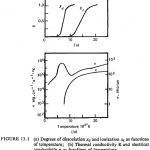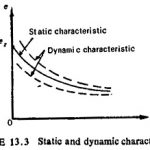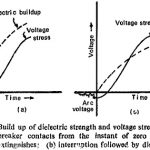Theory of Circuit Interruption Articles:
Arc in Circuit Breaker: Discharge in a.c. circuit breakers, generally in the form of an arc, occurs in two ways. When the contacts are being separated arcing is possible even when the circuit emf is considerably below the minimum cold electrode … (Read More)
Arc Properties: The manner in which the are medium is made to conduct has already been studied. A plot of instantaneous values of voltage eB between the electrodes of a burning arc against the corresponding values of current gives the Arc Properties. … (Read More)
Arc Interruption Methods in Circuit Breakers: The two modes of Arc Interruption Methods in Circuit Breakers are: high resistance interruption, and low resistance or current zero interruption. High Resistance Interruption: In this case the arc is controlled in such a way that its effective … (Read More)


